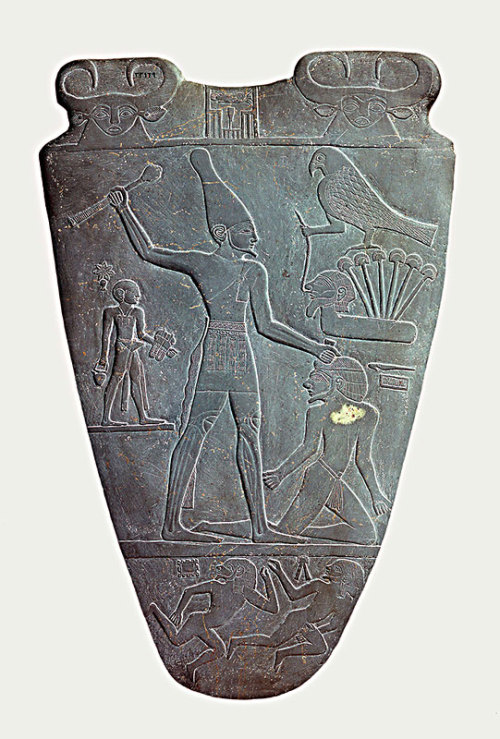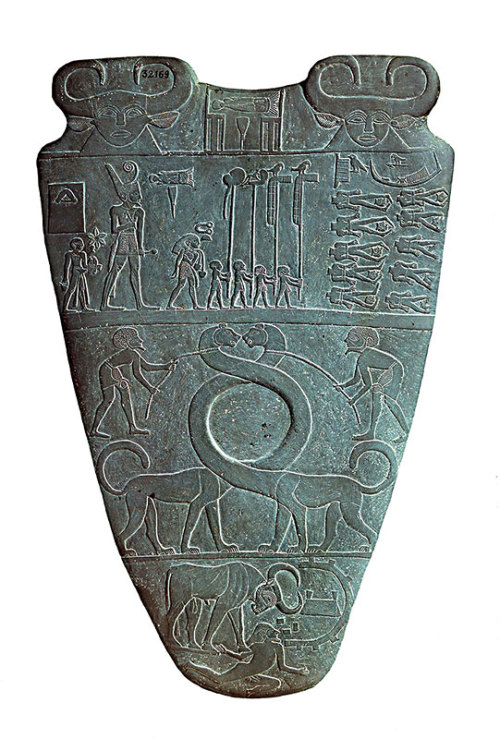egypt-museum:The Narmer PaletteThis palette commemorates the victories of King Narmer, who came from
egypt-museum:The Narmer PaletteThis palette commemorates the victories of King Narmer, who came from the south of Egypt to invade the Delta in about 3200-3000 BC.It represents the most important evidence that the first political unification in the history of mankind occurred in Egypt. The two faces of the artifact are topped by the name of Narmer inscribed inside the Serekh, or rectangular frame. In hieroglyphic signs, the chisel reads “mr” and the catfish reads “naar.” The Serekh is flanked by two female heads having the ears and horns of a cow, which could be the first representation of the goddess Hathor. The scene on the front shows the king, followed by his sandals bearer and wearing the White Crown of Upper Egypt, smiting a helpless foe from the North. The falcon Horus of Upper Egypt stands upon a bunch of papyrus plants holding a northern prisoner.The lower register, or scene, depicts two other northern enemies running away from the king. Inscribed upon their heads are hieroglyphic signs indicating their names or those of their localities. The upper section of the back side shows the king wearing the Red Crown of Lower Egypt, followed by his sandals bearer and preceded by his vizier and four standard bearers.Next comes a scene depicting the corpses of 10 beheaded men. In the middle section, there are two men holding two felines with extremely long necks representing the people of the North and South under the control of the king and his men. The lower section shows a bull, representing the king attacking the walls of a northern city.The Narmer Palette was discovered at the Hierakonpolis excavation site in 1897-98 by British archaeologist, James Edward Quibell, along with Frederick W. Green. It was discovered at the Temple of Horus in the ancient capital of the Upper Kingdom, Hierakonpolis. The palette was found along with the Narmer Macehead, another artifact which shows the completion of the conquest of the Lower Kingdom.Now in the Egyptian Museum, Cairo. JE 32169 -- source link

